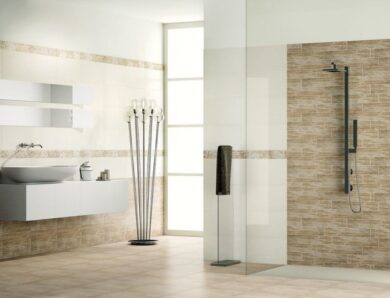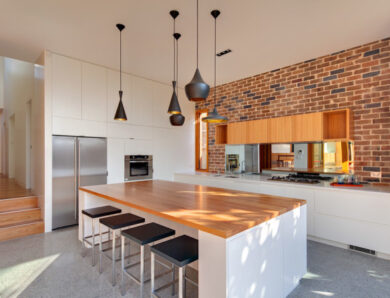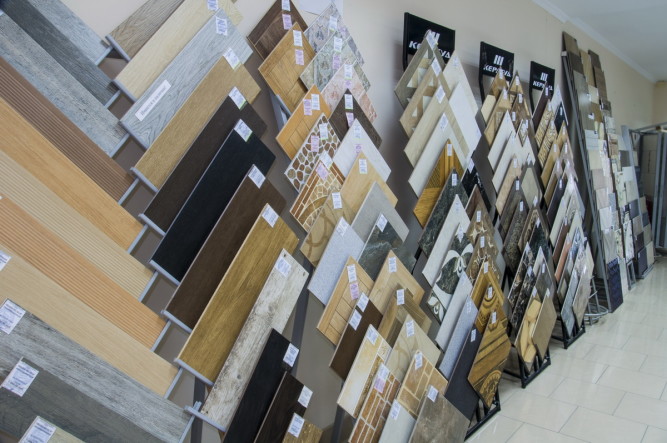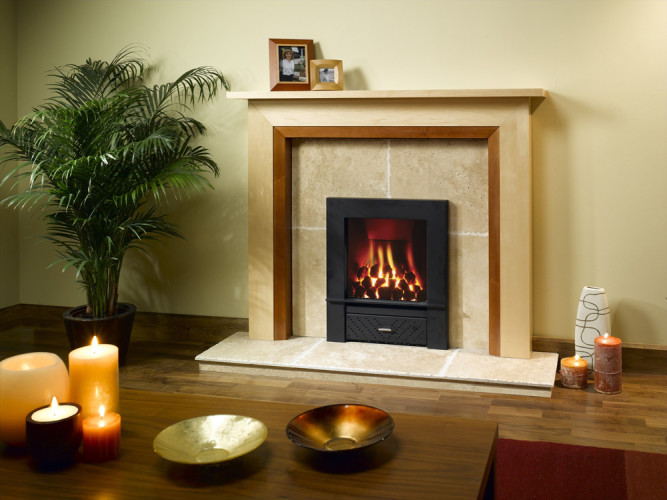
Which tile is better to lay the stove or fireplace
Чим обкласти грубу? To the question, which tile to cover the stove or fireplace, it is possible to give the unequivocal answer - possessing the improved characteristics of heat resistance. Non-standard operating conditions do not allow the use of ordinary material, and therefore it is necessary to understand the requirements for such processing.

Due to non-standard operating conditions for stoves and fireplaces, not every tile is suitable
Material requirements
- Low-porosity structure;
- low water absorption coefficient;
- increased strength;
- resistance to mechanical damage;
- heat resistance;
- property to accumulate and retain heat.
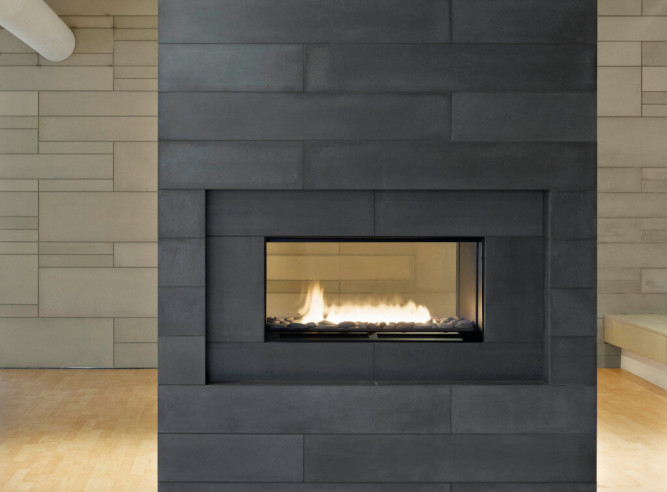
The main quality of tiles for stoves and fireplaces - heat resistance
Constant contact with heat and the risk of mechanical damage determine the characteristics of the cladding. It is important to know, what temperature a tile can withstand, as well as how well it provides heat exchange with the room.
Для обробки печей і камінів та груб використовуються:
- heat-resistant tile;
- terracotta;
- porcelain;
- clinker;
- tiles.
It is worth considering the features of these materials in detail.
heat-resistant tile
First, what comes to mind is an ordinary ceramic tile. But is it possible to cover a fireplace or stove? Here we pay attention to the function of the building. If you plan to use it to regularly heat the room, this option is best rejected immediately. And if it's more decor, all restrictions are removed.
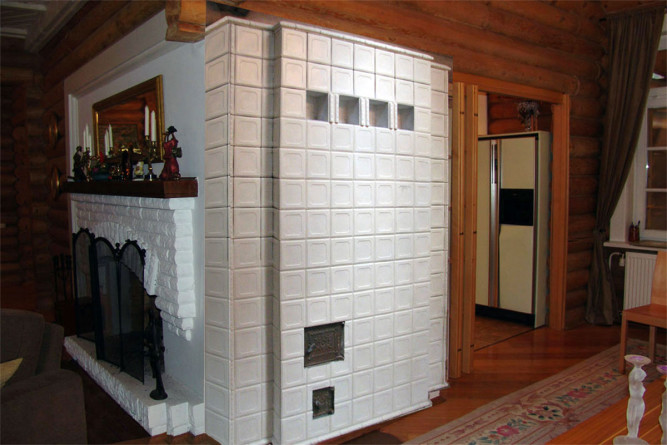
Option of facing with a special tile
In any case, it is recommended to pay attention to the strength and heat resistance of the tile. If it does not withstand high temperatures, not worth the risk, choose the material of the class above, it is not afraid of heat and has much better indicators of resistance to mechanical and chemical influences.
Ordinary low-class tile can not be used in such work, it cracks from the heat and bursts.
Terracotta
This material has been used for centuries, and therefore has good recommendations, time-tested.
Terracotta - unglazed ceramic tiles, which is easy to recognize due to the characteristic red-brown hue. It is made of clay and fireclay, and the color is provided by the addition of metal oxides. A distinctive feature is the change of properties when adding different amounts of fireclay. The more it is - the better the thermal characteristics of the material, but, large grains reduce strength, which is undesirable.
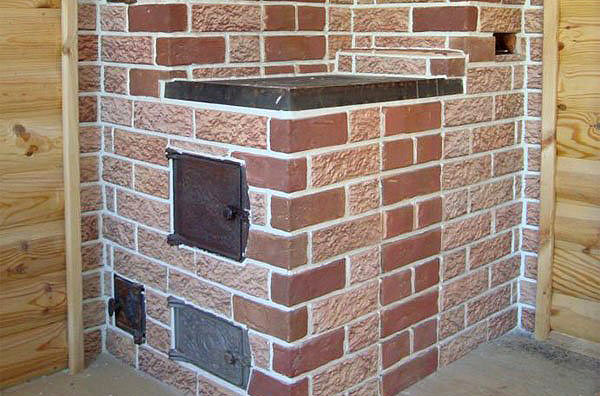
Terracotta cladding improves heat transfer
Such tiles cover the fireplace or stove, since it weighs relatively little, so it does not require additional strengthening of the base. During operation, it heats up quickly and cools down slowly, gradually giving off heat to the heated room, and high temperature she is not afraid. And natural design will appeal to fans of rural style.
porcelain
Porcelain tiles are better in terms of resistance to high temperatures and sharp drops, in addition, this material is not afraid of bumps and scratches.
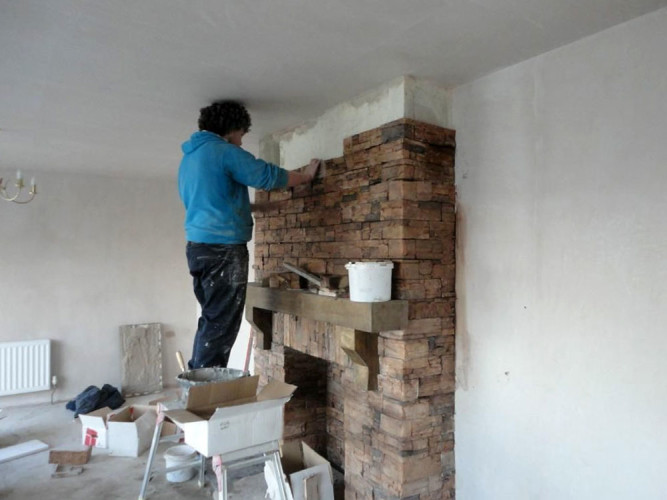
Облицювання керамогранітной плиткою з фактурною поверхнею
It is made of several types of clay, and high strengths are achieved by adding granite and marble crumbs to the raw material. Therefore, the stove is covered with porcelain, fireplace, facades of buildings, work surface in the kitchen, floors, etc.. D. It is able to withstand huge loads without losing useful qualities.
As for thermal characteristics, due to the properties of the materials used and the integral non-porous structure, this tile provides no worse, and sometimes the best space heating, in comparison with other types of facing. Another plus - the ability to simulate any surface as terracotta, and glazed majolica.
clinker
Clinker tiles are made of natural materials, which thanks to technology of pressing and firing turn into high-strength heat-resistant and antistatic product.
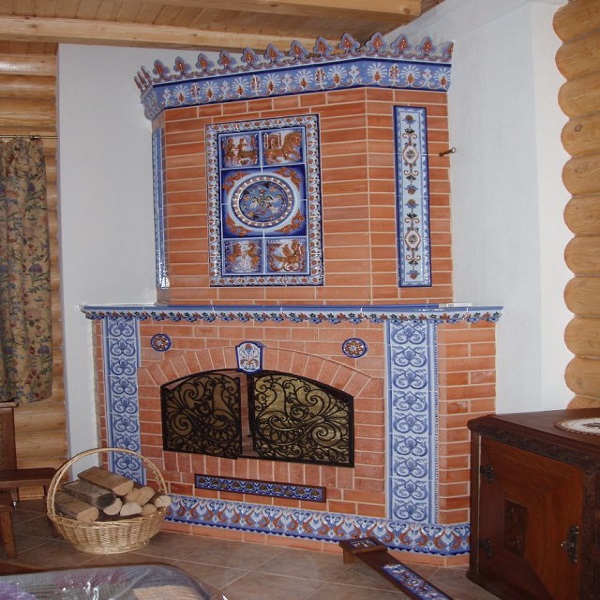
Fireplace with clinker
When using such facing, that you do not worry about the integrity of the coating during operation, clinker tiles perfectly restrain fire and provide heat retention for full and uniform heating of the room. She is not afraid of high temperature at all, as well as mechanical damage during operation. Clinker tiles do not allow moisture, which is also important.
Despite the limited palette, you can easily choose the right tone, in addition, in a private home, naturalness looks best. The variety of colors varies from white to rich chocolate.
tiles
This material is best for the oven. This is a special ceramic tile, which is a three-dimensional box-shaped elements. Essentially, it is a flat decor, attached to the so-called RUMP. Thanks to this feature uniform and fast heating of the room is provided, as well as reliable air retention with the help of an air cushion.
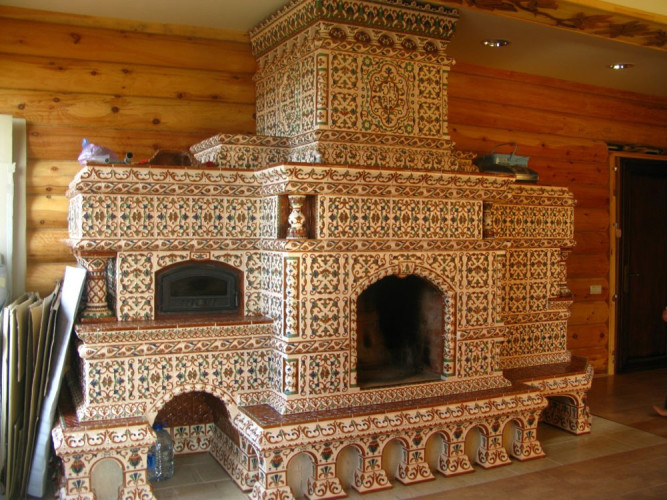
Always fashionable finish
To line the stove or home fireplace with tiles, use special adhesive mixtures, and cement-sand mortar. Of great importance here is the additional type of attachment. Each fragment is connected not only to the walls, but also among themselves. To do this, a nail is driven into the seams between the bricks, and a tile is attached to it with a wire. Joints and voids are filled with mortar.
This type of cladding provides gradual heating, therefore, they do not "sculpt" the room and are able to accumulate heat for a long time, due to which it is more rational distribution.
Naturally, question about, which tile is best to lay the stove disappears by itself, if we focus only on these indicators. However, consider the high price of such products, so sometimes it is better to find a decent budget alternative.
Knowing, which is tiled fireplace or stove, it will be much easier for you to decide on the cladding material, without making a fatal mistake. Before buying, be sure to estimate the cost of finishing work and subsequent heating costs. This will help solve, where it is better to save, to end up in a favorable position.

